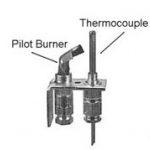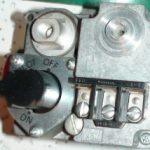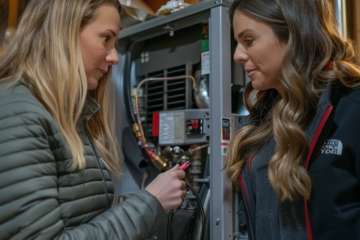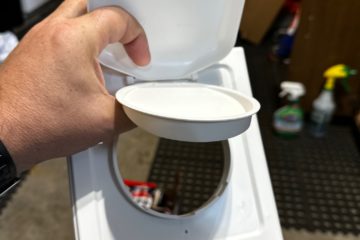 You have no heat and the house is starting to get cold, the first thing I would check on an older furnace system is the pilot light. This is very easy to check and a skill that every homeowner should have. If your furnace system is 10 years or older there’s a good chance that is only an 80% AFUE furnace and has a standing pilot light that needs to remain lit at all times. The pilot can go out at any time for various reasons, relighting it is not hard will go through it step by step here, and we will go over all the components involved.
You have no heat and the house is starting to get cold, the first thing I would check on an older furnace system is the pilot light. This is very easy to check and a skill that every homeowner should have. If your furnace system is 10 years or older there’s a good chance that is only an 80% AFUE furnace and has a standing pilot light that needs to remain lit at all times. The pilot can go out at any time for various reasons, relighting it is not hard will go through it step by step here, and we will go over all the components involved.
Pilot light assembly
The first thing that will go over is the pilot light assembly, it is made up of just two parts they are the thermocouple and the pilot burner.

Thermocouple: The thermocouple is simply a sensor that is meant to measure heat, when there is a constant flame from a pilot light it heats the tip of the thermocouple, This creates a small voltage. When the flame or heat is removed from the thermocouple so is the voltage. the small amount of voltage that is created in the thermocouple is used to allow the gas valve to open when heat is called for. When there is no flame at the tip of the thermocouple this means there is no voltage and thus will not allow the gas valve to open even when heat is called for from the thermostat. This is a safety feature so the gas cannot flow if there is no way to immediately ignite it.
Pilot burner: The pilot burner is simply a small gas line that goes from your main gas valve to the pilot light assembly. A very small amount of gas is continuously burnt to heat your thermocouple.
 Gas Valve: The gas valve on an older furnace will have three or four settings, they are on, off, pilot and sometimes set. When your furnace is in full operation the gas valve will be in the set position, when you are relighting your pilot light the gas valve needs to be in the pilot position.
Gas Valve: The gas valve on an older furnace will have three or four settings, they are on, off, pilot and sometimes set. When your furnace is in full operation the gas valve will be in the set position, when you are relighting your pilot light the gas valve needs to be in the pilot position.
So those are the main components that are involved in the operation of your pilot light on an older model furnace. let’s go through the steps at relighting your pilot light now.
Step By Step Guide To Relighting Your Furnace Pilot Light
Step 1: Because you may have had a small amount of gas flowing into the heat exchanger area of your furnace you were going to want to let that clear out. So the first thing we will do is turn the gas valve to the off position and leave it for 5 minutes.
Step 2: Turn your gas valve to the pilot position, You should have a red button that can now be depressed when you push down on it. When the gas valve is in the off position you will not be able to press down on this button. So now that the gas valve is in the pilot position, depress the red button and hold it down.
Step 3: Using a barbeque lighter or long match ignite the gas coming out of the pilot burner while continuing to hold down the red button. You will have to hold this button down for 30 – 60 seconds. This is allowing the thermocouple to heat up and create a small amount of voltage.
Step 4: After waiting about 1 minute of holding the red button down you can slowly release the button. The pilot light should now stay lit, if it goes out repeat the first three steps again.
Step 5: Now All That Remains to be done is turn your gas valve to the on position, be careful as some furnaces will let a little too much gas out during the ignition process which is called Flame rollout, this can create a slightly dangerous situation. Do not sit directly in front of the burners when turning the valve to the on position, move slightly to the side.
Step 6: If everything is gone to plan your furnace should be back to full operation, if the pilot did not stay lit it could be that you need a new thermocouple. They are not hard to replace If you are somewhat mechanical, but you might want to call in a professional furnace repair company at this point.
I hope they short tutorial help you get your furnace going again, nothing worse than not having any heat when it’s cold outside. The good news is you also just learned how to relight your hot water tank at the same time. The gas valve and pilot assembly of a hot water heater are essentially the exact same as a furnace of the same era. So there you have it you’ve learned two important skills that you require as a homeowner with an older HVAC system.



